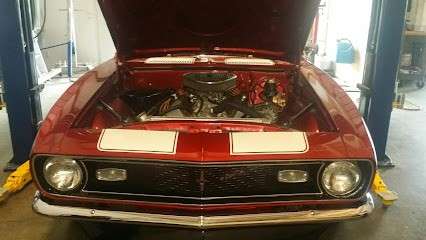
Where you see a bewildering tangle of hoses, belts, and metal parts, skilled technicians read your engine compartment like a familiar story. They spot subtle changes in appearance, texture, and position that reveal your vehicle’s actual condition and forecast upcoming troubles. This expertise develops over years of diagnosing problems across countless cars.
Trained professionals catch details that completely bypass typical drivers. A minor color change here, an unusual wear mark there, or a part sitting slightly wrong can signal developing problems. Learning what experts notice helps drivers become better vehicle advocates and avoid expensive surprises.
Skilled mechanics at London Bridge Auto And Transmission Repair for car repair in Virginia Beach, VA, build this knowledge through years of diagnosing issues across various vehicle brands and models. Professional training combined with hands-on experience creates diagnostic skills that seem almost supernatural to untrained observers.
1. Fluid Analysis: The Detective Work Most People Miss
Mechanics check every fluid in your vehicle, not merely oil levels. Each fluid displays a specific color, thickness, and odor when functioning correctly. Changes in these qualities provide essential clues about component health and service requirements. Experienced technicians can often diagnose problems just by examining fluid samples, understanding that fluids tell stories about what’s happening inside sealed systems.
Transmission fluid analysis reveals critical information. Fresh fluid appears bright red and smells sweet. Burned fluid turns dark and develops acrid odors that indicate internal damage. Metal particles in fluid suggest component wear that needs attention. car repair in Virginia Beach, VA
Professional mechanics can often predict transmission problems months before drivers notice symptoms, simply by examining the fluid condition during routine service.
2. Belt and Hose Inspection: Reading the Wear Patterns
Belts and hoses operate under harsh conditions and display wear in predictable ways. Mechanics search for cracking, fraying, or glazing on belts that signal replacement time. Hoses reveal their condition through flexibility, surface appearance, and connection quality.
These rubber components endure extreme temperature cycles, chemical exposure, and mechanical stress that eventually cause failure.
Essential warning signs mechanics monitor include:
- Serpentine belt cracking: Small cracks running across the belt ribs show aging
- Radiator hose swelling: Soft spots indicate internal breakdown
- Vacuum line stiffness: Hard, inflexible lines can fail suddenly
- Clamp deterioration: Rusty clamps often mean leak troubles
Routine inspection of these parts prevents roadside failures and costly emergency service.
3. Battery and Electrical System Diagnosis
Battery terminals reveal electrical system health through corrosion patterns, cable condition, and connection security. Mechanics also examine alternator belt tightness and battery mounting hardware. Electrical difficulties are generally perplexing to drivers, but professionals understand how these systems work and where problems typically occur.
Modern automobiles rely significantly on electrical systems, making battery and charging system performance crucial. Weak batteries strain alternators and can cause electronic component problems. Professional testing reveals battery and alternator condition before complete failure occurs.
Load testing shows how batteries perform under stress, providing better information than simple voltage measurements.
Corrosion patterns around battery terminals indicate specific problems. White, powdery corrosion suggests overcharging, while blue-green corrosion indicates acid leaks. Clean terminals ensure proper connections, but many drivers ignore this basic maintenance. Professional diagnosis includes testing output voltage, current delivery, and ripple patterns that indicate internal alternator condition.
4. Cooling System Analysis: Beyond Just Temperature
Your cooling system works harder than you might think. When a mechanic pops the hood, they’re checking the coolant itself – what color is it? Bright and clear, or muddy and tainted? To determine whether the hoses are becoming brittle or still flexible, they will squeeze them.
Also closely examined are the radiator’s fragile fins, which are susceptible to bending or being clogged with debris.
What most people don’t realize, though, is that engines today operate at far higher pressures and temperatures than the vehicles your dad worked on. This implies that when something goes wrong, it does so quickly.
A good mechanic knows the warning signs.
5. Suspension and Steering: Reading the Signs
Walk around your car with a mechanic, and they’re seeing things you probably miss. Those oil stains on your driveway? It could be leaking shocks. The way your tires are wearing – maybe just on the inside edge, or in a weird pattern? That tells a story about your suspension.
Steering components are where things get serious from a safety standpoint. Worn tie rods or ball joints don’t just make your car handle poorly – they can fail while you’re driving. That’s why mechanics get particular about checking these parts during inspections.
The Bottom Line
Because they know what to look for, mechanics have a different perspective on your vehicle. They are aware that neglecting minor issues might result in more significant and costly ones.
Although you don’t need to become a technician right away, knowing what they check for makes you a more informed car owner.
If you see that your tires are worn unevenly or that your coolant is rusty, you’ll know that the mechanic is helping you avoid much more serious issues later on, not just attempting to sell you anything.